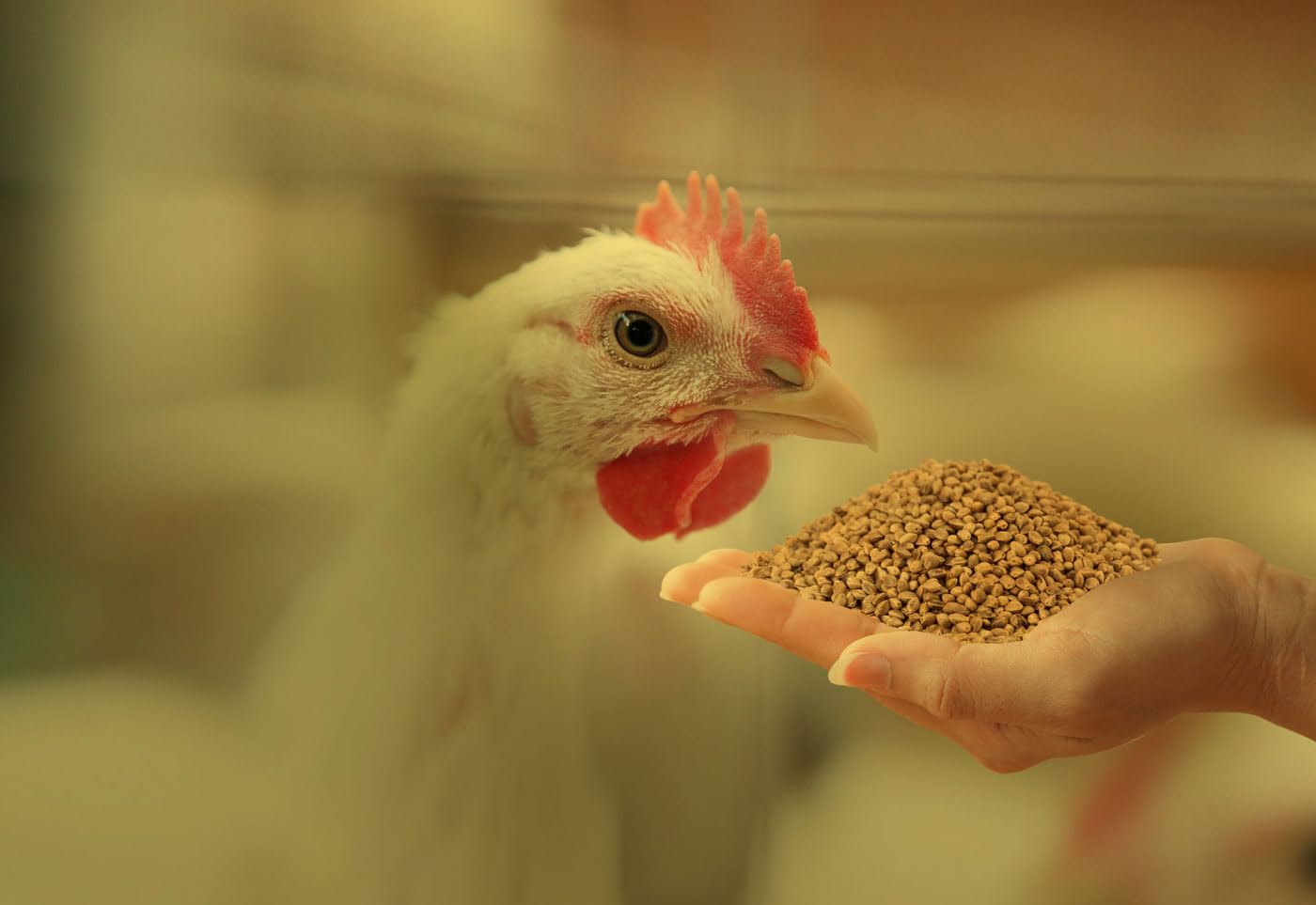The poultry feed market is witnessing substantial growth as the global demand for poultry products, particularly meat and eggs, continues to rise. Poultry products are among the most affordable and accessible sources of protein, making them a staple food choice for both developed and emerging economies. As the global population increases and urbanization accelerates, the demand for efficient poultry production has grown significantly, driving the need for high-quality and nutrient-enriched feed. Poultry feed plays a critical role in improving poultry health, enhancing growth rates, and ensuring higher productivity while addressing challenges like disease management and resource efficiency. This growing market is further supported by advancements in feed technology, sustainable farming practices, and an increasing shift toward antibiotic-free and organic poultry products, reflecting changing consumer preferences.
The poultry feed market is primarily shaped by trends focusing on feed efficiency, sustainability, and innovation. As feed constitutes a significant portion of poultry farming costs, there is a growing emphasis on advanced formulations that optimize nutritional intake and promote faster growth. Fortified feeds enriched with vitamins, amino acids, and probiotics are increasingly being adopted to enhance poultry performance and reduce mortality rates. In addition, the use of feed additives like enzymes and prebiotics has gained momentum, addressing challenges of antibiotic resistance while improving digestibility and nutrient absorption. The rising preference for clean and natural poultry products is also driving the demand for organic feed solutions free from synthetic additives. Emerging economies in regions like Asia-Pacific and Africa are leading this growth, as rising disposable incomes and urbanization spur demand for affordable and sustainable protein sources.
The impact of the poultry feed market is significant for farmers, feed manufacturers, and consumers. For farmers, high-quality feed solutions enable increased productivity and profitability, helping them meet the growing demand for poultry products. Manufacturers are innovating to develop sustainable and cost-effective feed formulations, incorporating alternative ingredients such as insect-based proteins, algae, and single-cell proteins to address supply chain challenges. However, the market faces hurdles such as the rising cost of raw materials like soybeans, corn, and wheat, which are critical components of poultry feed. Price volatility caused by climate change, geopolitical tensions, and logistical disruptions adds to these challenges, particularly for small-scale farmers. Despite these issues, the focus on sustainability and resource efficiency is enabling stakeholders to strike a balance between profitability, affordability, and environmental responsibility.
The broiler feed segment dominates the poultry feed market, driven by the increasing demand for poultry meat, which has surpassed other meat categories globally. Broiler feed is specifically formulated to promote rapid weight gain and maximize meat yield, making it essential for commercial poultry farming operations. Additionally, the layer feed segment is growing steadily as egg consumption rises due to its affordability and nutritional benefits. Layer feed formulations enriched with essential minerals like calcium and phosphorus ensure improved egg production and poultry health. Organic and sustainable feed options are also gaining traction as consumers prioritize natural, antibiotic-free poultry products. This shift toward organic feed and the adoption of innovative feed solutions present significant opportunities for market players to cater to evolving consumer demands while maintaining efficient and cost-effective production practices.
The future of the poultry feed market looks promising, with innovations and sustainable practices driving its evolution. Technological advancements such as precision nutrition and smart feed management systems are enabling tailored feed formulations to optimize poultry productivity. The adoption of alternative protein sources, including insect-based and algae-based feeds, is expected to address challenges related to raw material availability and rising costs while reducing the environmental footprint. Feed additives like enzymes, probiotics, and prebiotics are likely to become mainstream, enhancing feed efficiency and eliminating the need for antibiotics in poultry farming. As governments promote sustainable agricultural practices and clean protein solutions, stakeholders across the poultry feed market will need to adapt to changing trends. By investing in innovative, eco-friendly solutions, the industry can ensure long-term growth while meeting the global demand for affordable and sustainable poultry products.









